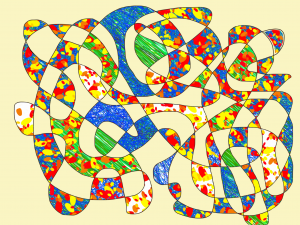
12 Places to Find Fabulous Content: Some good stuff here that’s adaptable to whatever type of blog one might be working with. “Your own bloopers,” for example, is a nice one.
How to Use Social Media Listening to Create Better Content for Your Audience: Along the same lines, identify relevant topics to write about on social media as well as identifying influencers and building relationships.
How to Get Interviewed by Popular Blogs (Even If You’re Not a Big Shot): If you’re trying to build your authority — as well as links to your website — getting interviewed is a valid strategy. This should help get you started, but be aware it requires a little bit of brazeness.
Content Distribution Tools: A variety of additional ways to share content, such as a list on List.ly
13 Experts on How To Promote Content Before Hitting Publish: Some of these steps seem more actionable than others, but some useful stuff to think about when strategizing content production.
7 Practical Ways to Find Content Your Followers Will Love: Primarily about tools rather than different approaches. Covered are Buffer, BuzzSumo, ContentGems, Feedly, HootSuite, Klout, and Swayy.
Community
Building a Sustainable Community. As a sometimes moderator of the SFWA boards, and the person the moderators currently report to, I keep an eye out for interesting or useful community building pieces. This is one,although it’s aimed at a community of fans.
Privacy and Security
No one knows where it came from, but there’s new spyware called Regin out there, and it is widespread in crucial industries such as energy, telecom, hospitality, and travel. It’s there and actively monitoring, but experts don’t know why. “Once they [Regin’s operators] gain access, they can remotely control a person’s keyboard, monitor Internet activity, and recover deleted files….O’Murchu said Regin is part of a disquieting trend of government-written and government-enacted malware.”
Social Media
What Is Pinterest? A Database of Intentions: An interview with Evan Sharp, one of Pinterest’s co-founders, about the image-centered social network. “What’s cool is that because every object was put there by a person. It’s not the largest inventory in the way that maybe a nerd like me would get excited about. But everything that’s on there, at least one human found interesting, so there is a very good chance that at least one other human is going to find that interesting. So, it’s a good set of objects. It’s the world’s largest set of objects that people care about.”
I put a couple of Twitter-related blog posts out in November. They were Twitter Basics and Best Practices and The One Twitter List You Should Be Keeping: My thoughts on some Twitter best practices.
2014 Social Media Image Size Cheat Sheet: “Understanding why you should use images is the easy part. It’s the mastering of how to actually do it that can be tricky. In addition to finding the right images to post, tweet, pin, and share across your different networks; you also need to figure out the right dimensions for your images, as well.” That’s pretty dead on, which makes this a very useful resource.
The 10 Latest and Greatest Social Media Strategies to Boost Your Results and Save You Time: Some useful and interesting stuff here, at least a couple of which I plan to try.
Social Sharing Powerhouses: Some places (or strategies) you may not be trying, like Guy Kawasaki’s approach of tweeting a piece of content four times over the course of eight hours.
10 Data-Driven Steps To Dominate LinkedIn Publishing: I still don’t feel like I’ve got a good handle on how to use LinkedIn, but this article may provide a decent starting point.
Whats the Best Way to Spend 30 Minutes of Your Time on Social Media Marketing? Unsurprisingly, being able to schedule content plays a part here too. Includes the 12 tasks of a social media manager.
8 Piece-of-Cake Ways to Get More Pinterest Followers: Pinterest remains a social network of interest to me. These are some decent best practices for posting on there.
Technology
10 Boring PR Tasks to Automate: Some of this is probably stuff you don’t worry about doing, like tracking the click rate of your e-mails, but I strongly suggest automating social media where you can with something like the Buffer app.
What do I mean when I say something like click rate? Here’s a basic overview of terms like click rate and conversion.
List-Building Strategies: Your email list is supposed to be your best place for selling things. Here’s some hints on building that mailing list.
7 Indispensable and Free Website Graders and Content Scorers: Some useful ways to look at your website for weak spots. Very nice to have something to looks at accessibility issues, which is a review that (IMO) websites should conduct every year.
How Big is Email? This big.
I follow links like this in order to keep my next edition of Creating an Online Presence up to date. If you want to track my links as they occur, you can follow me on Delicious. If you’re interested in the next online class on it, it’s Sunday morning, February 15th, 2015, 9:30 AM-12:30 PM PST. The cost is $89 for former students; $99 for new students.







